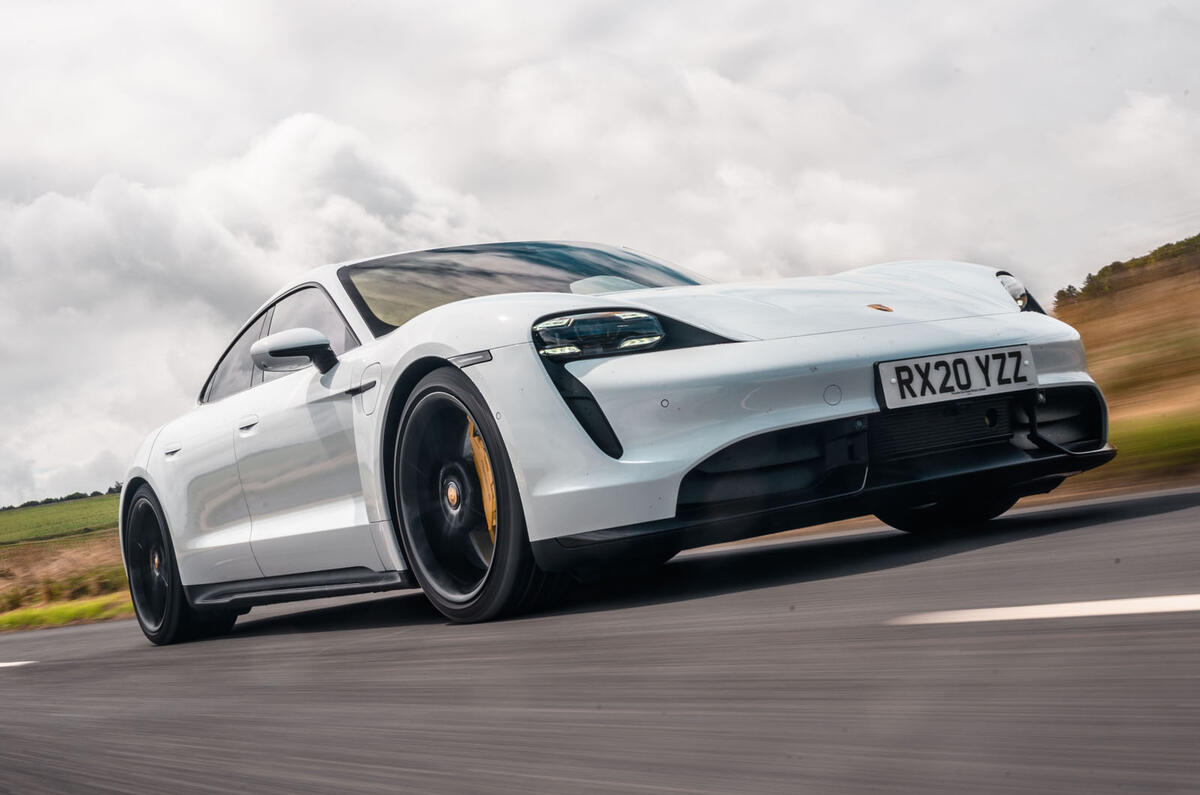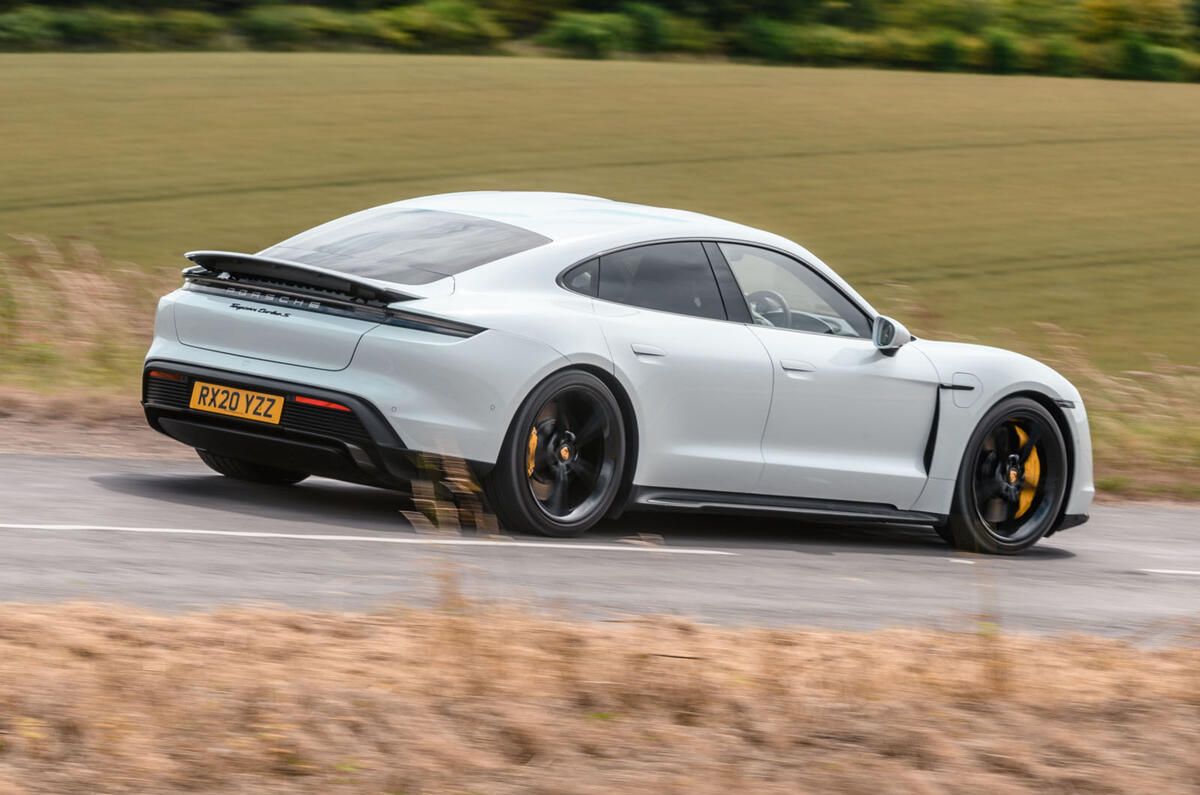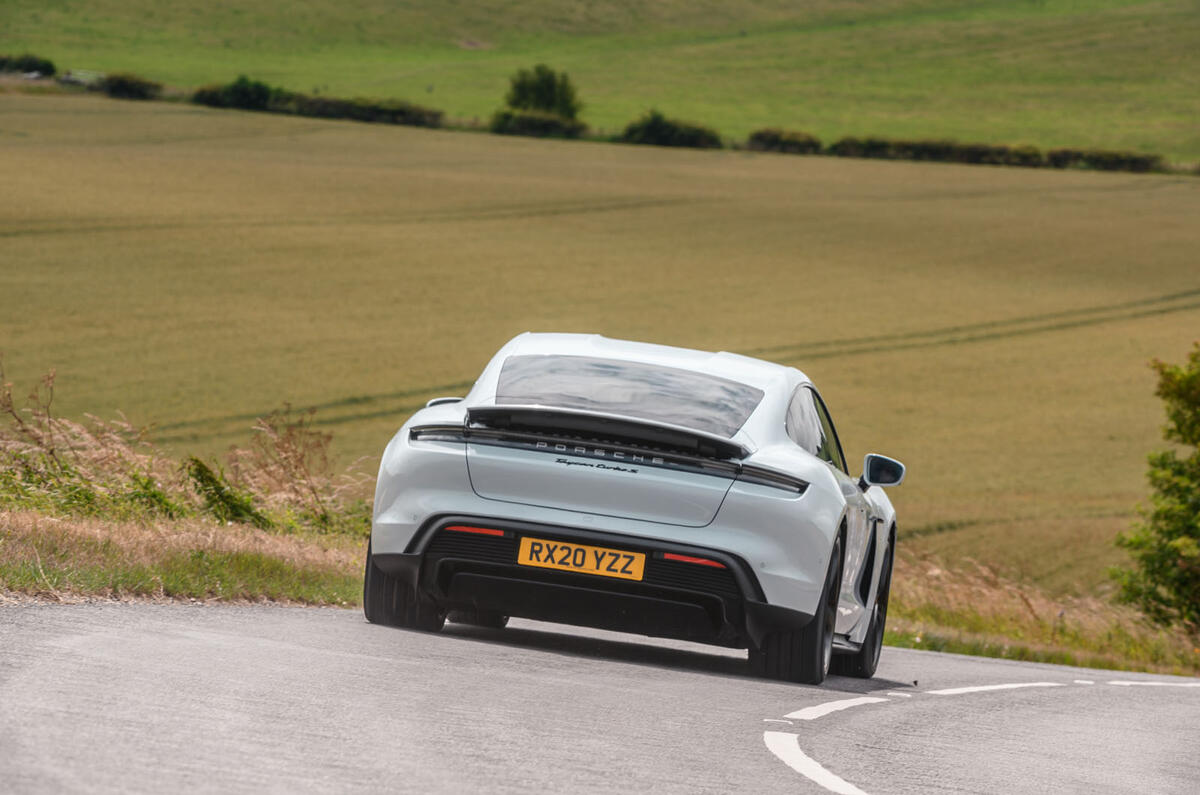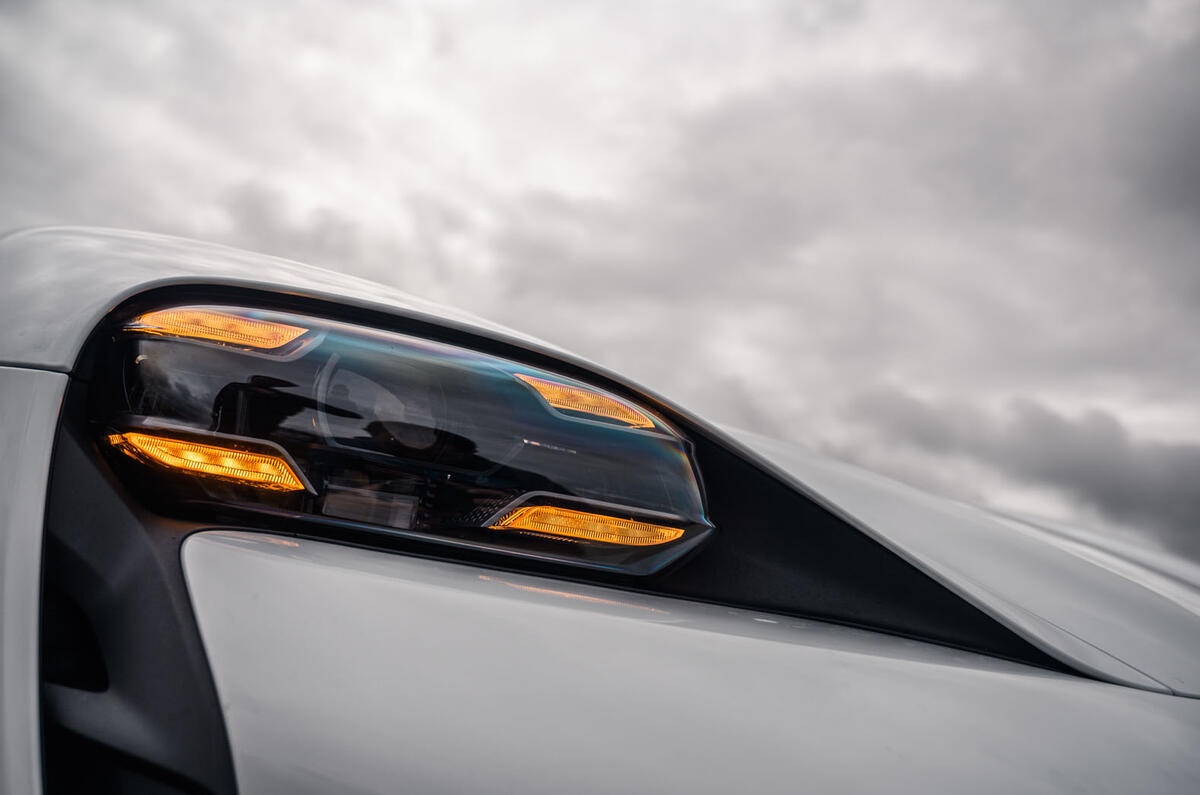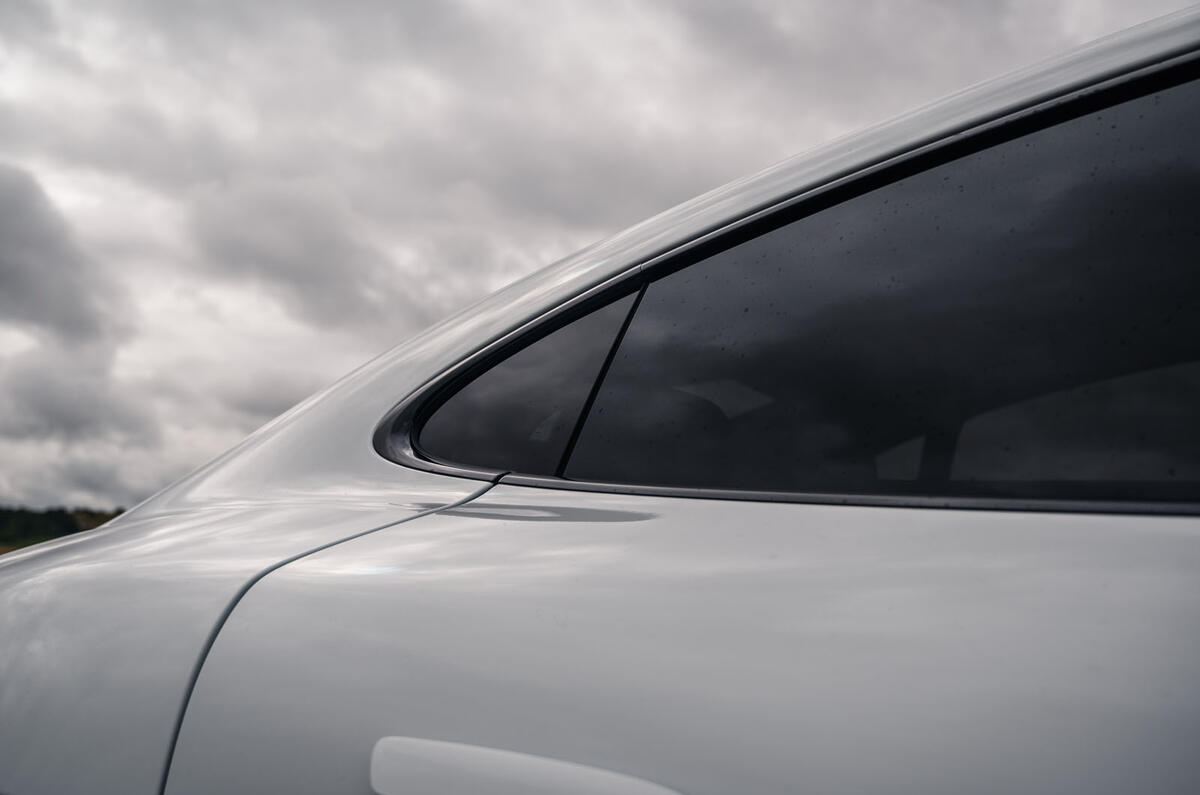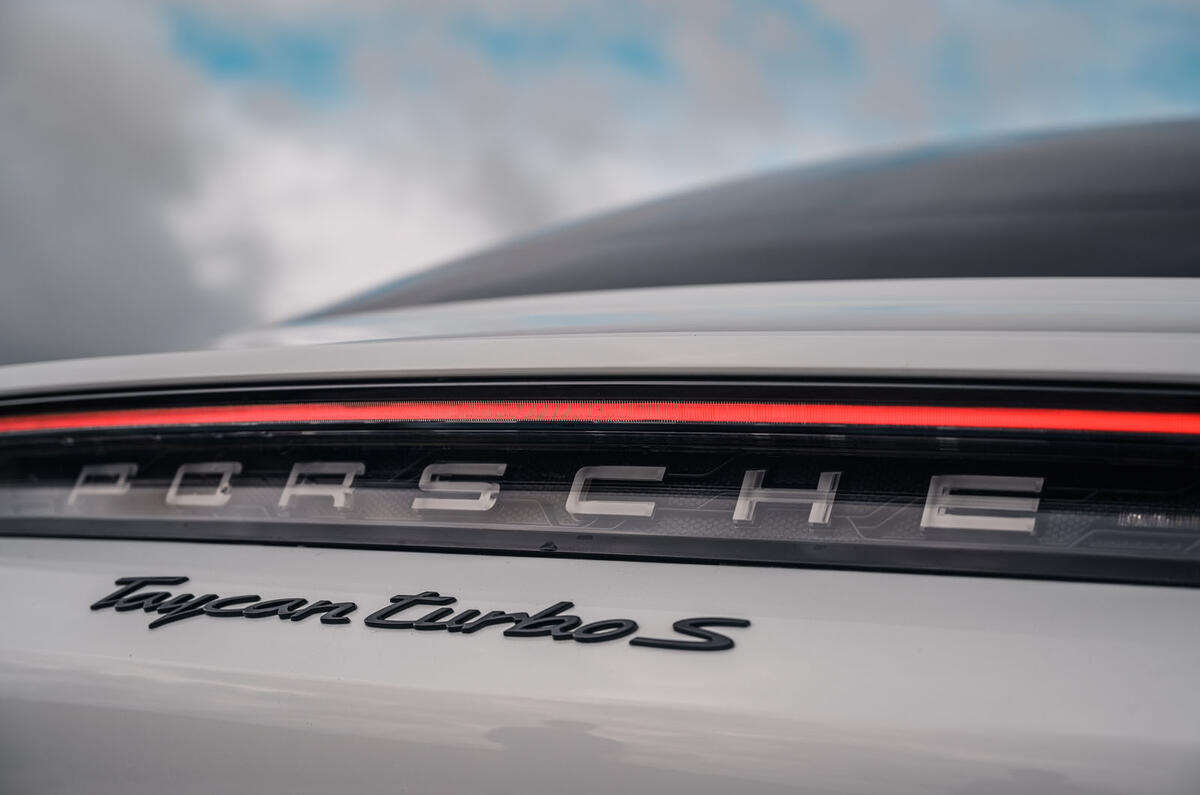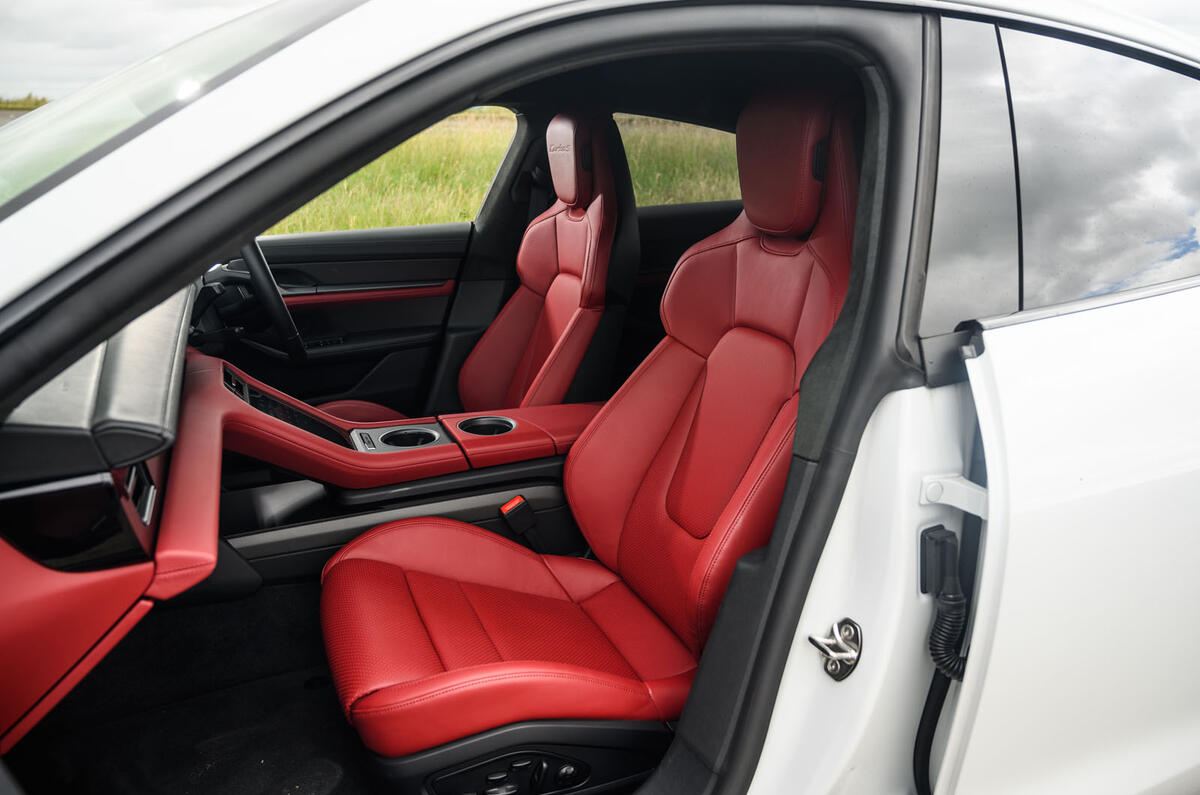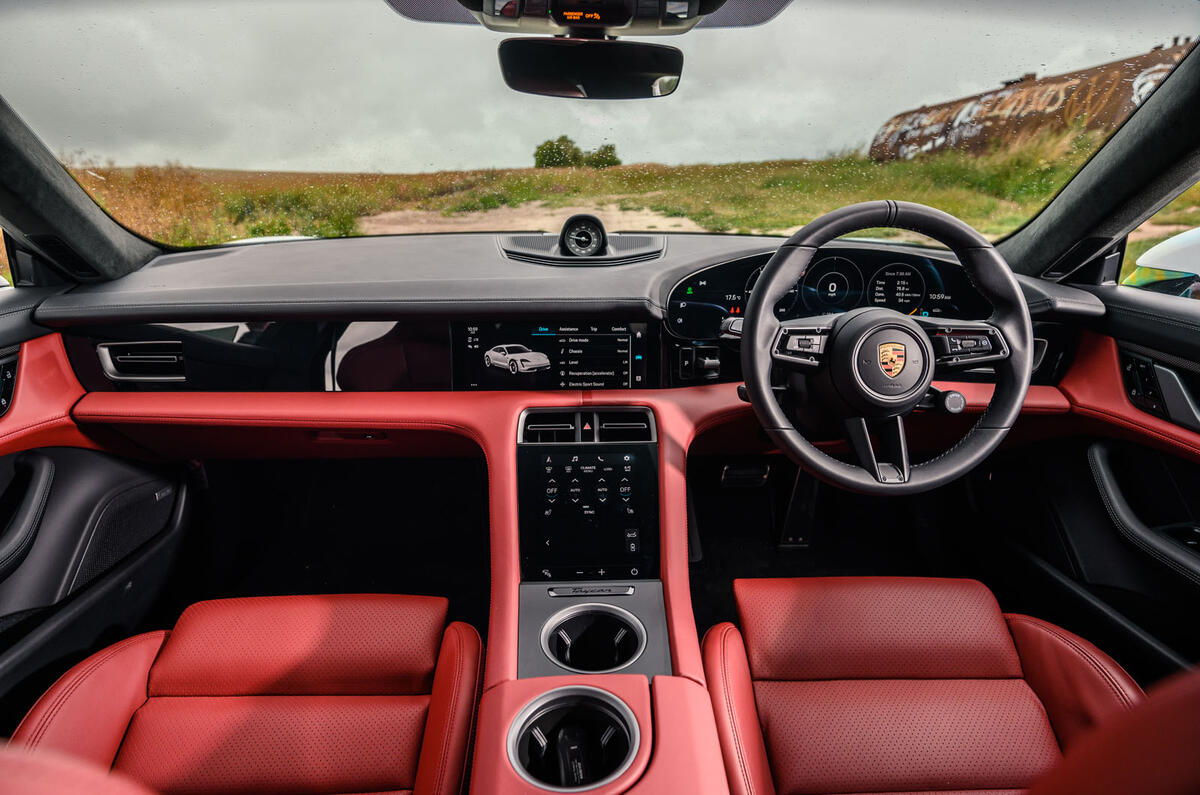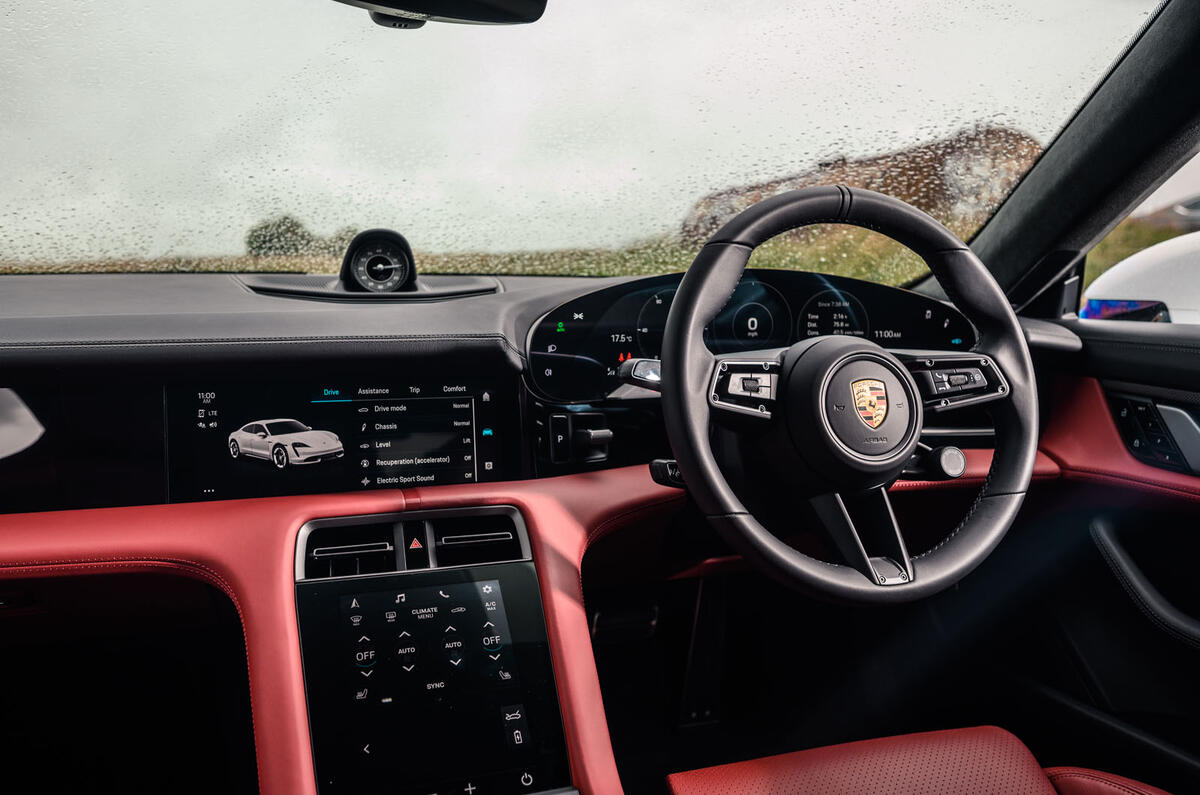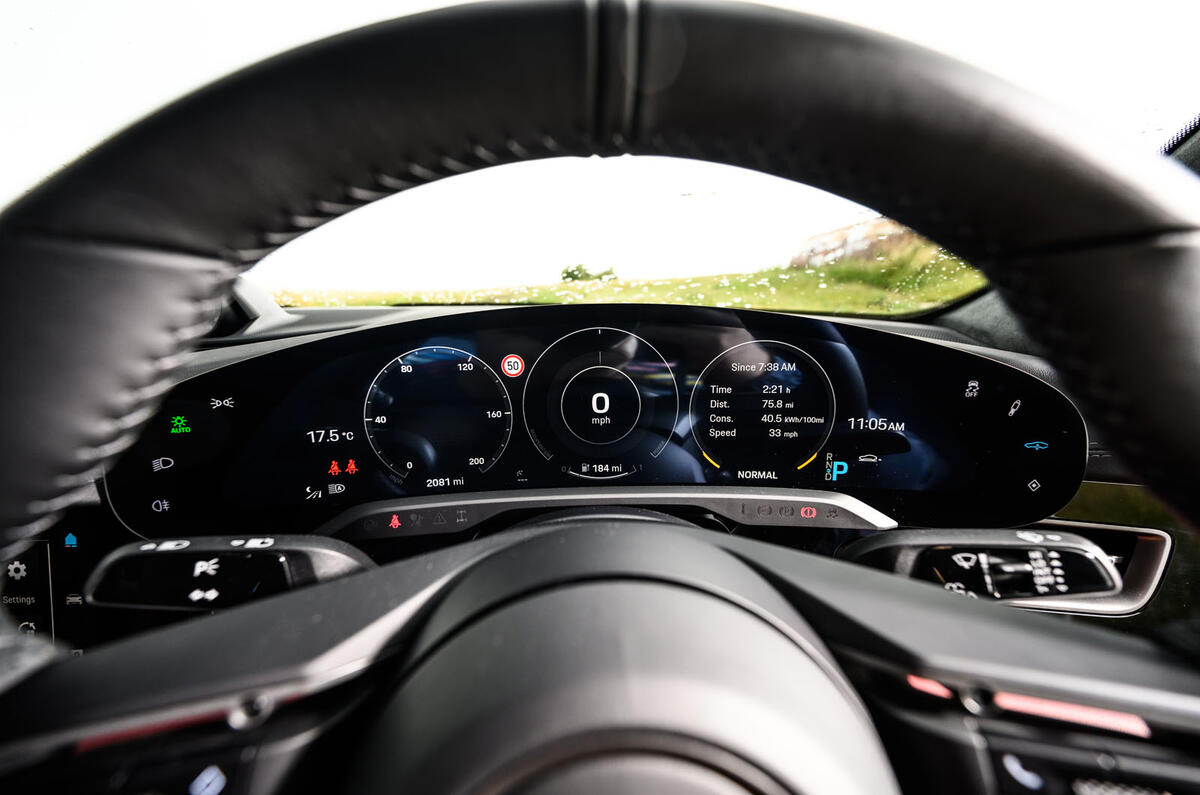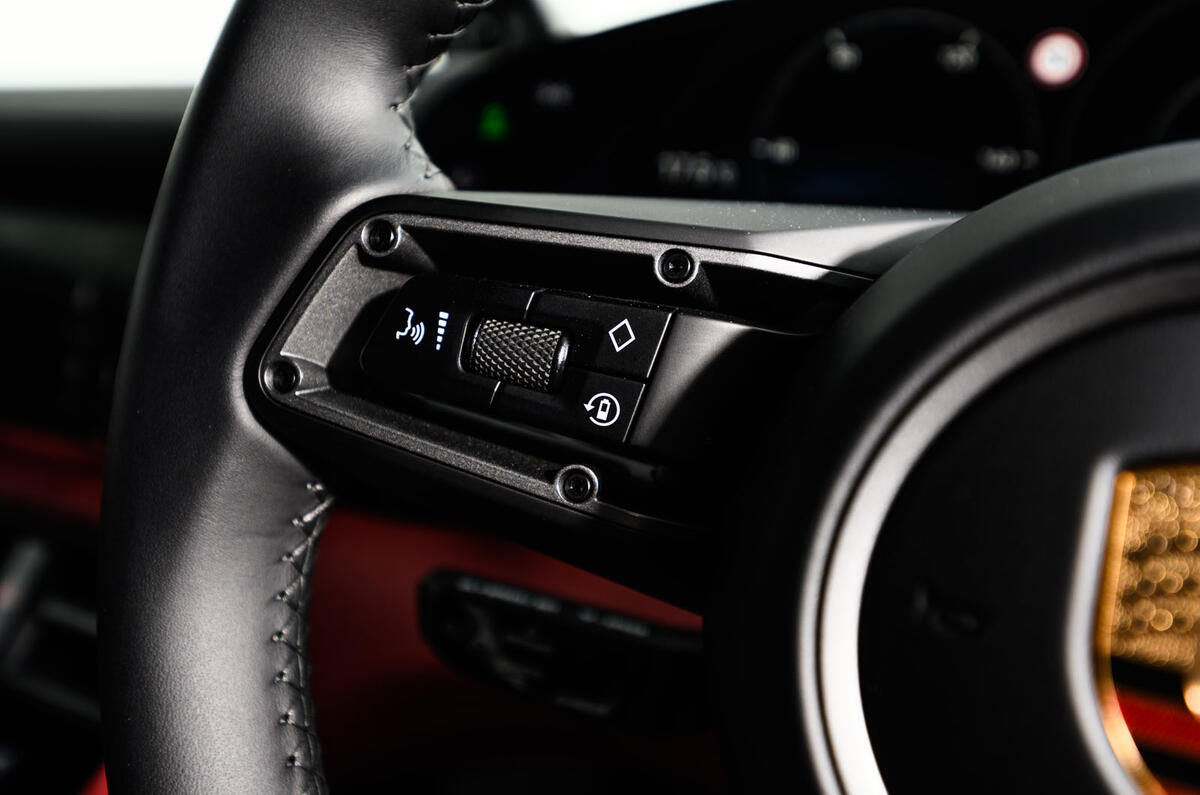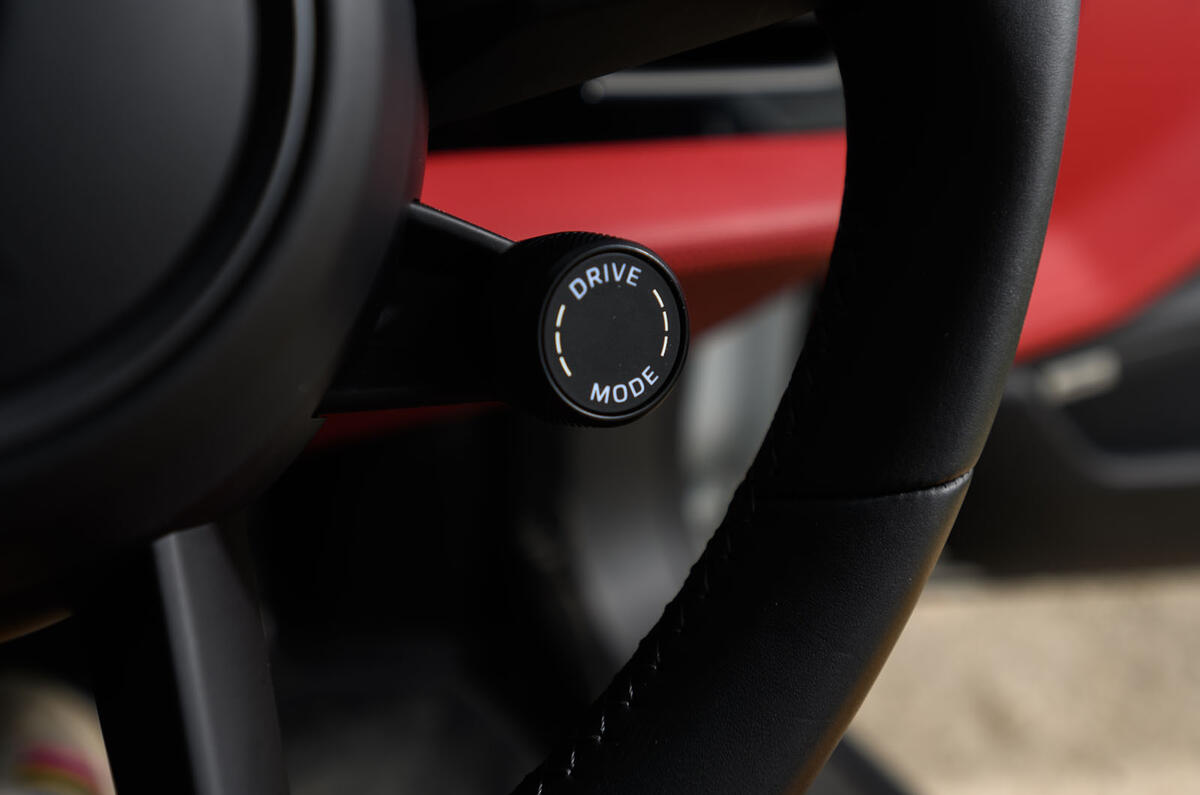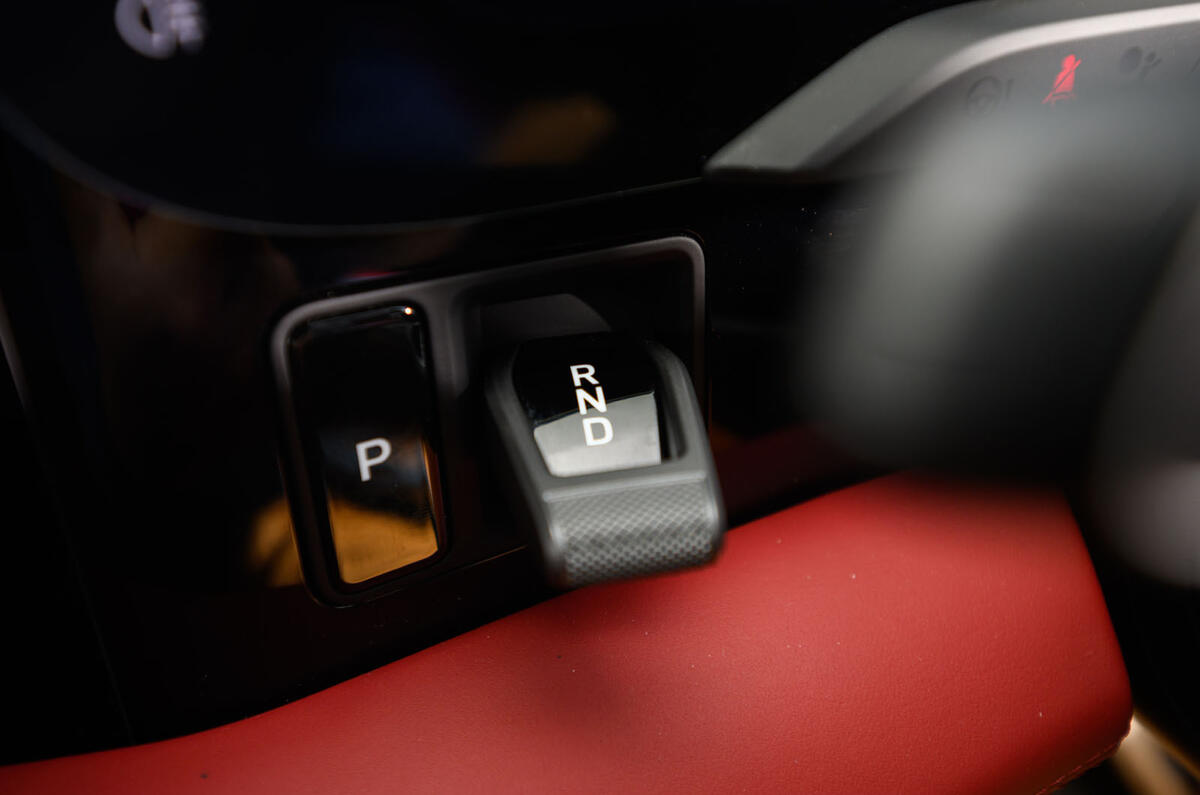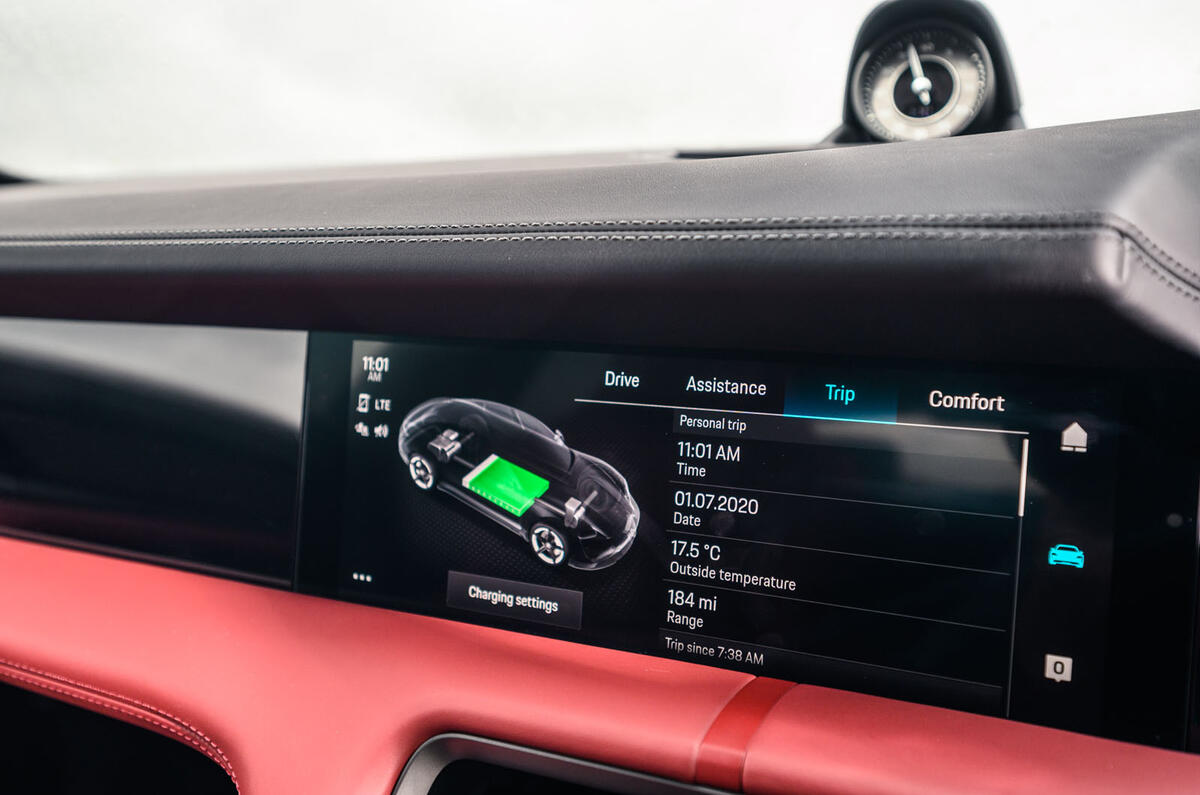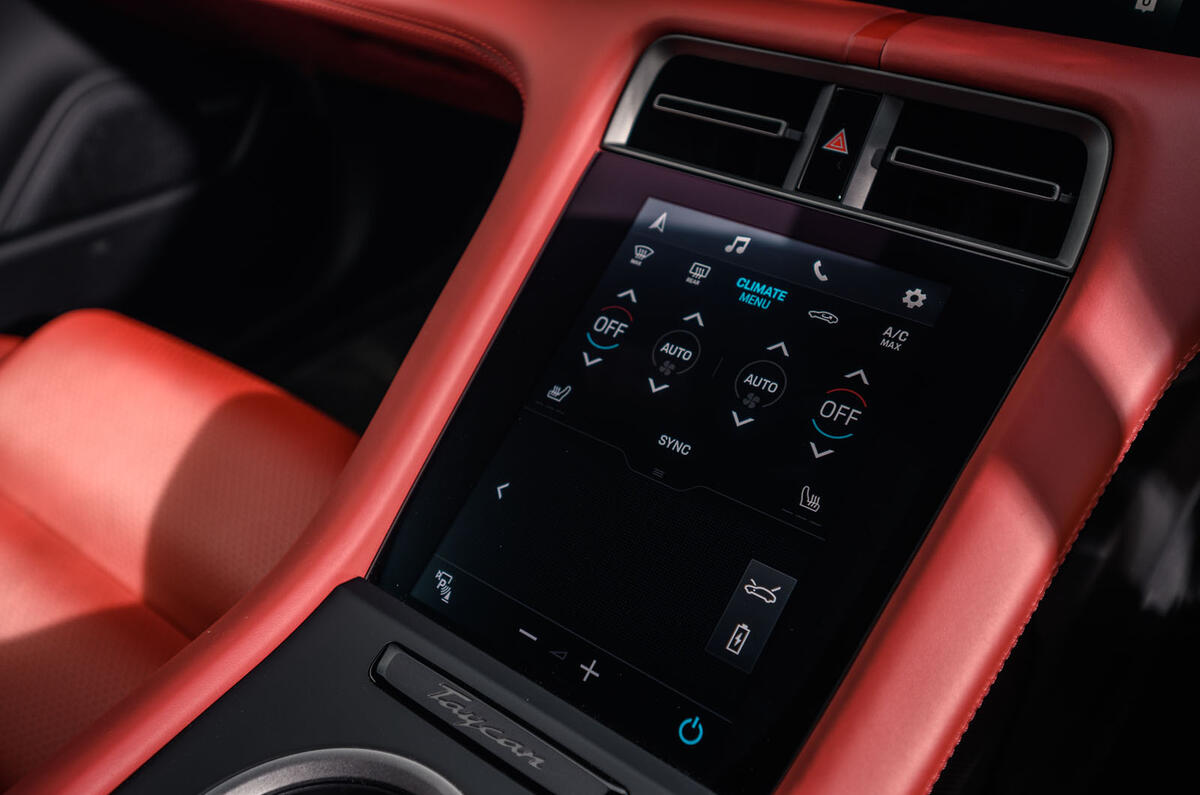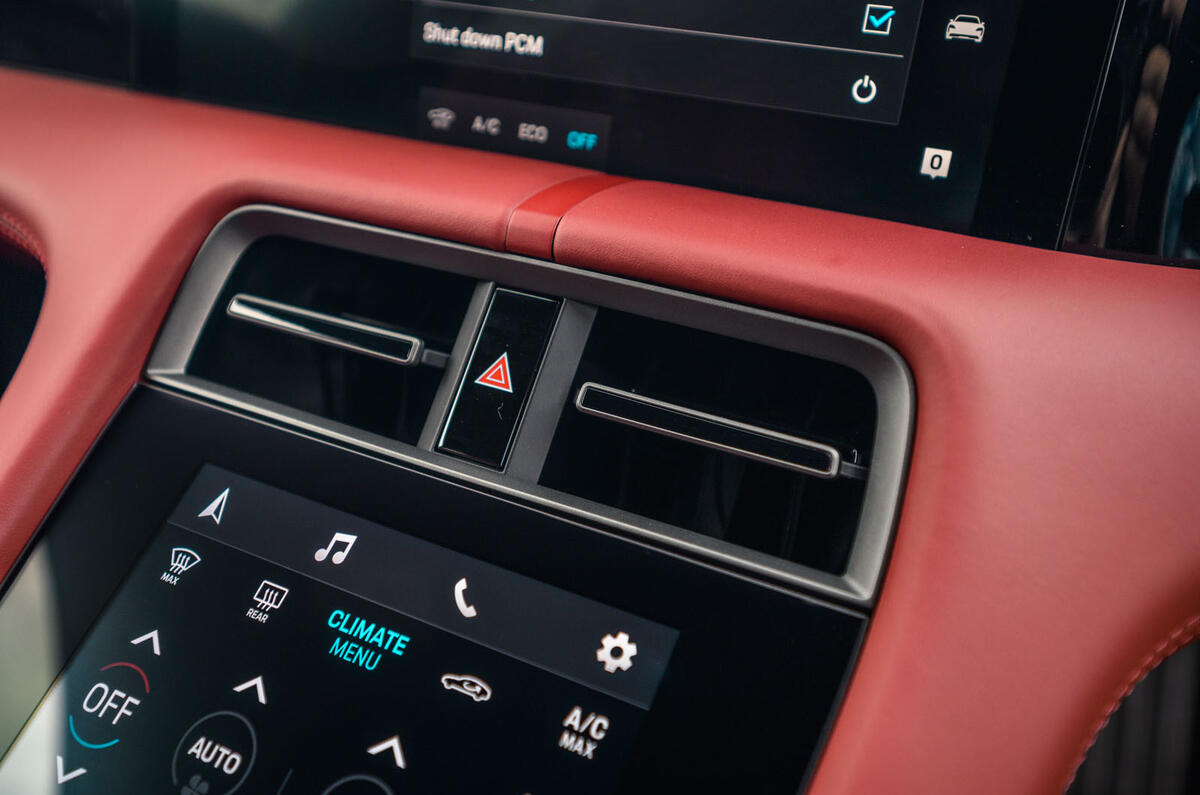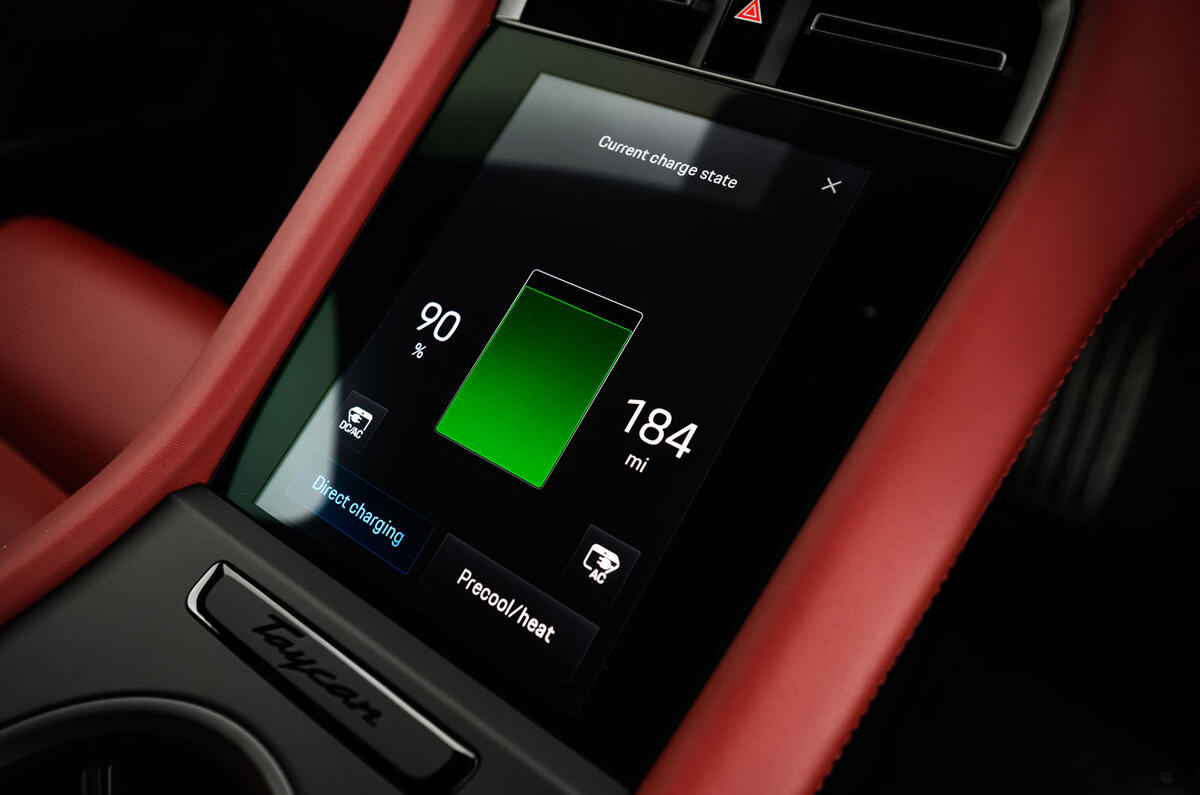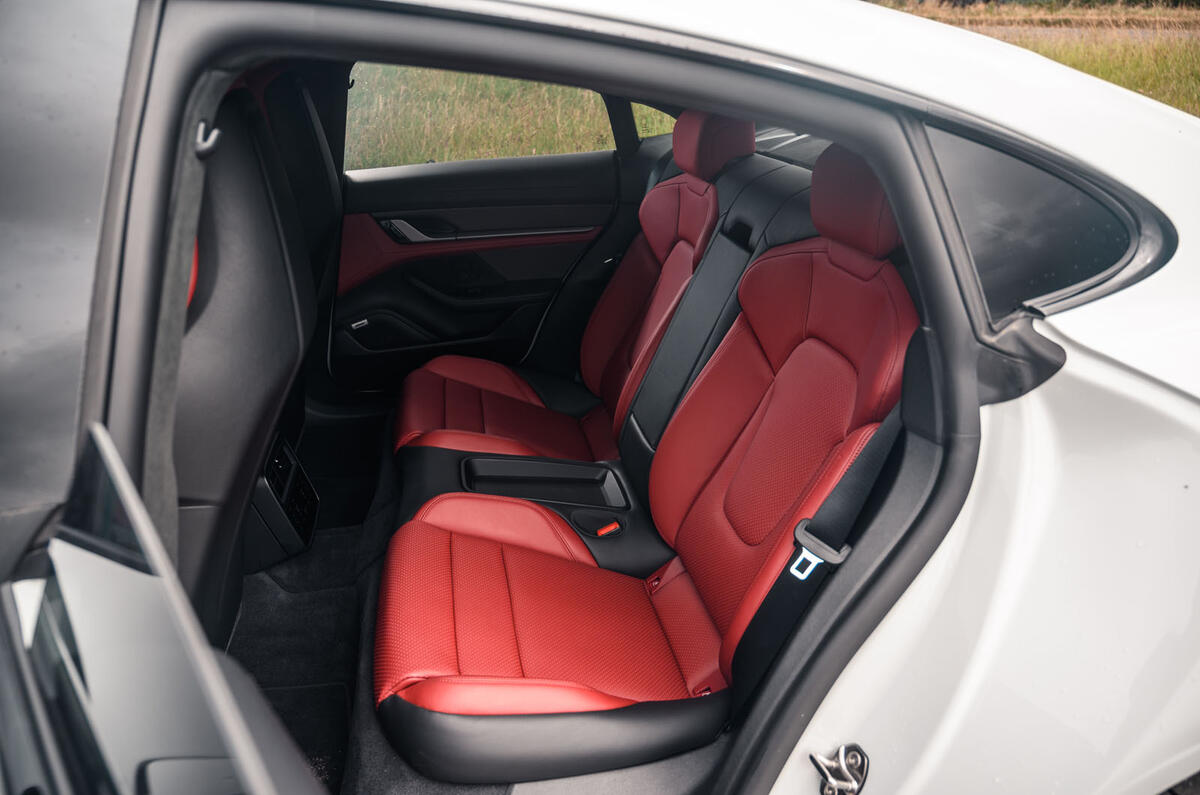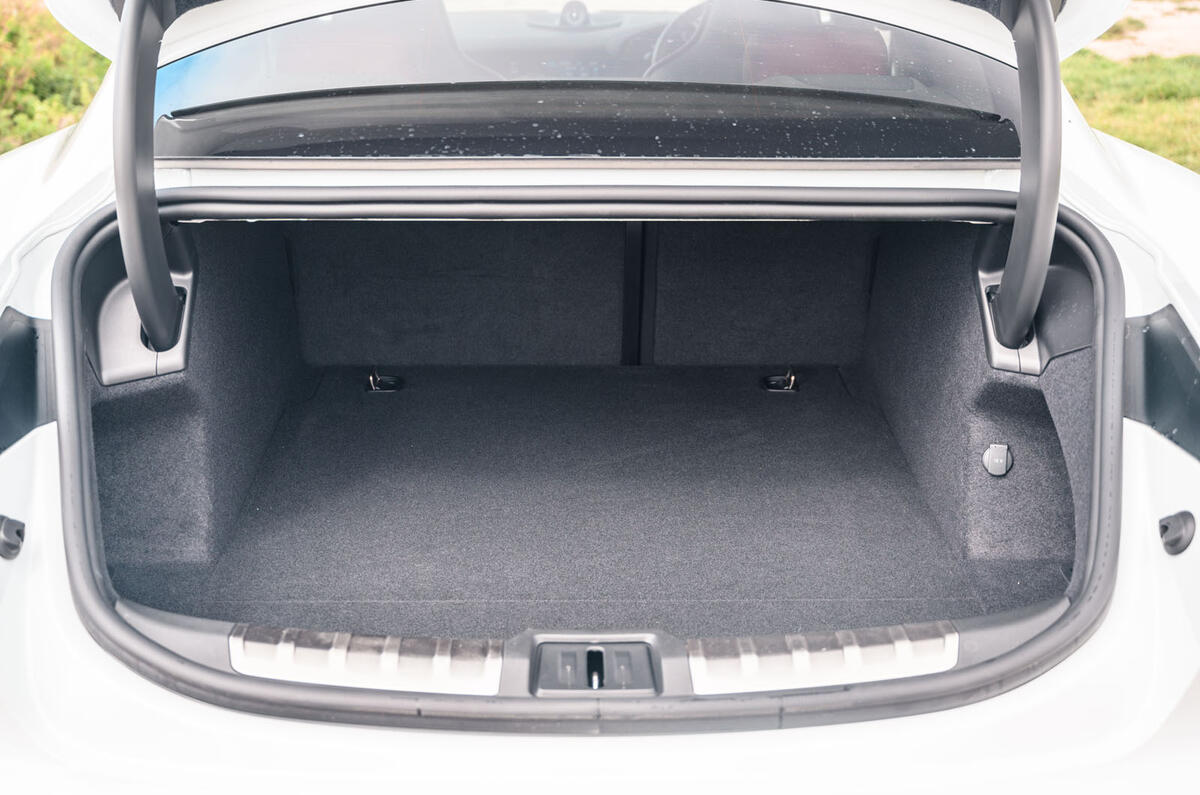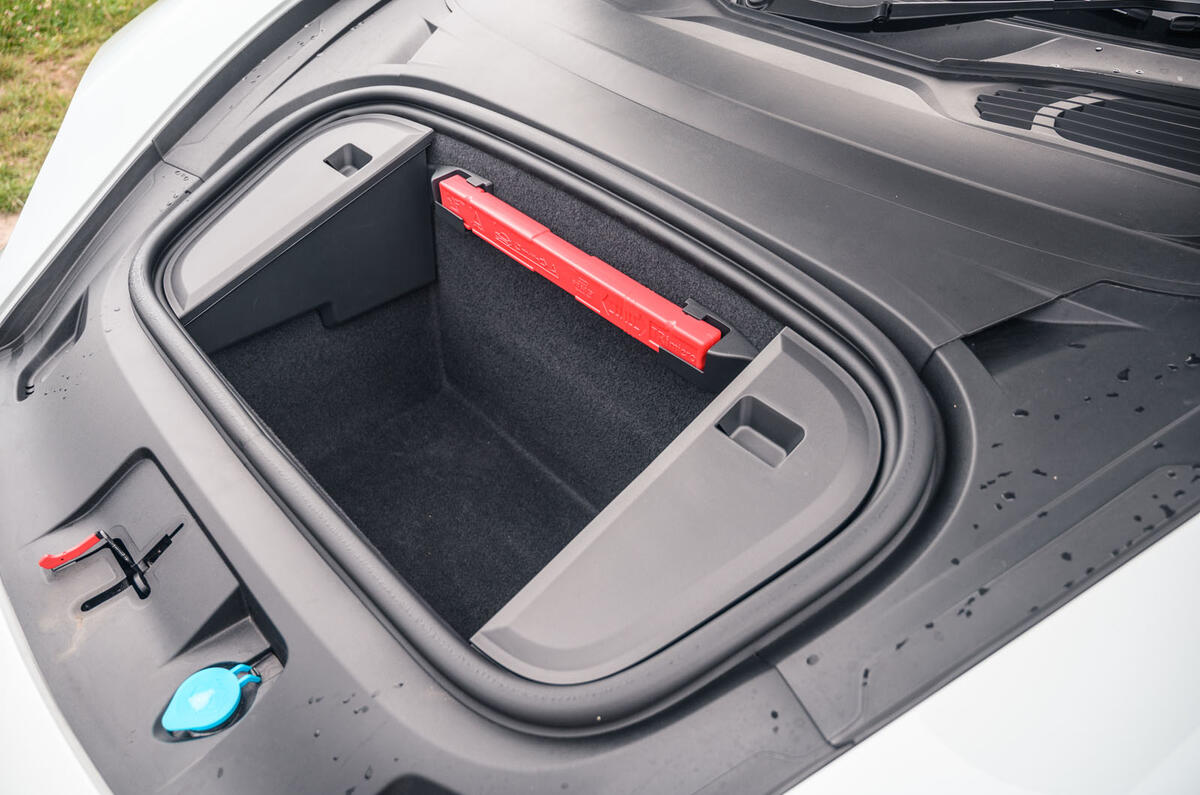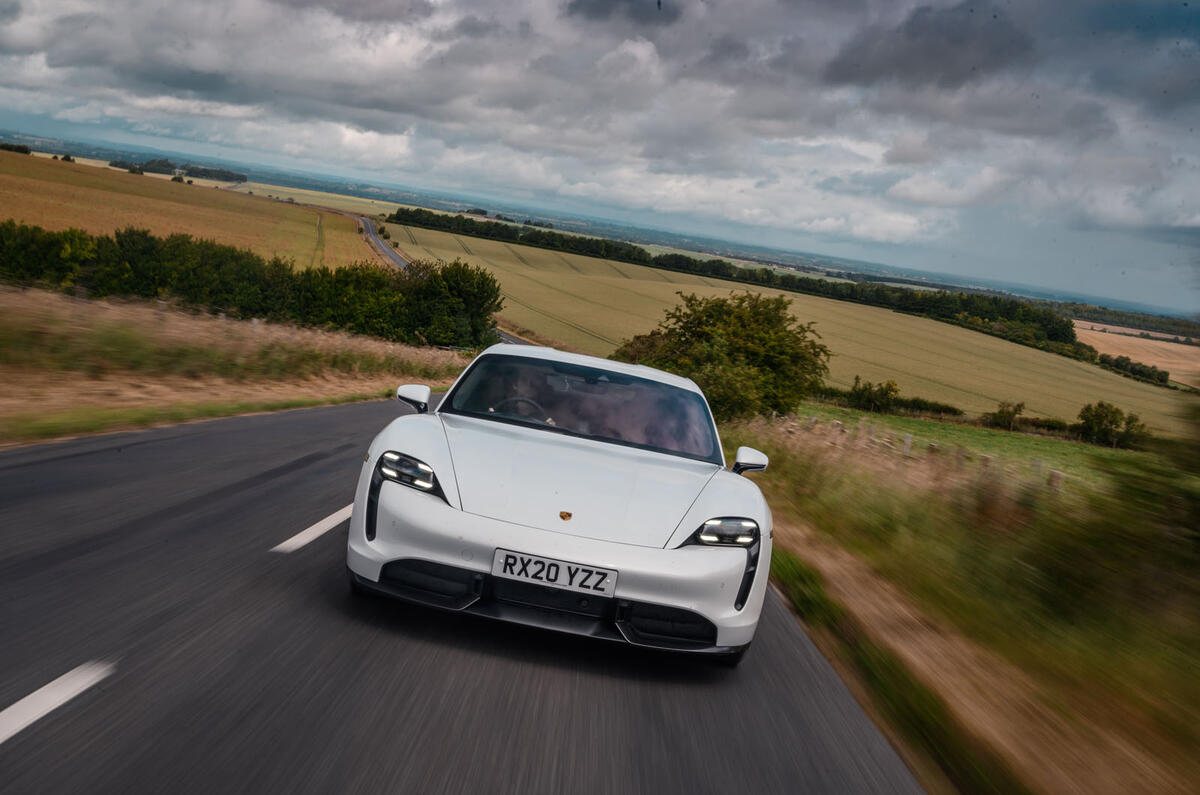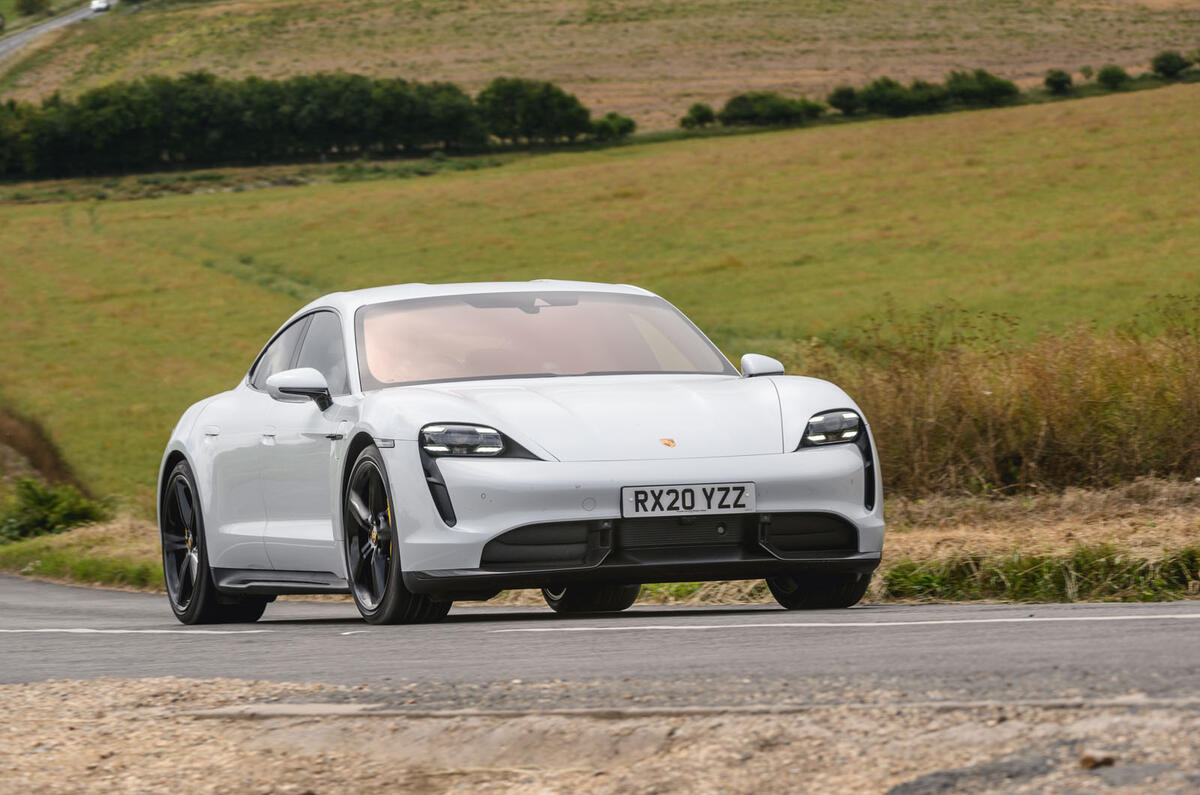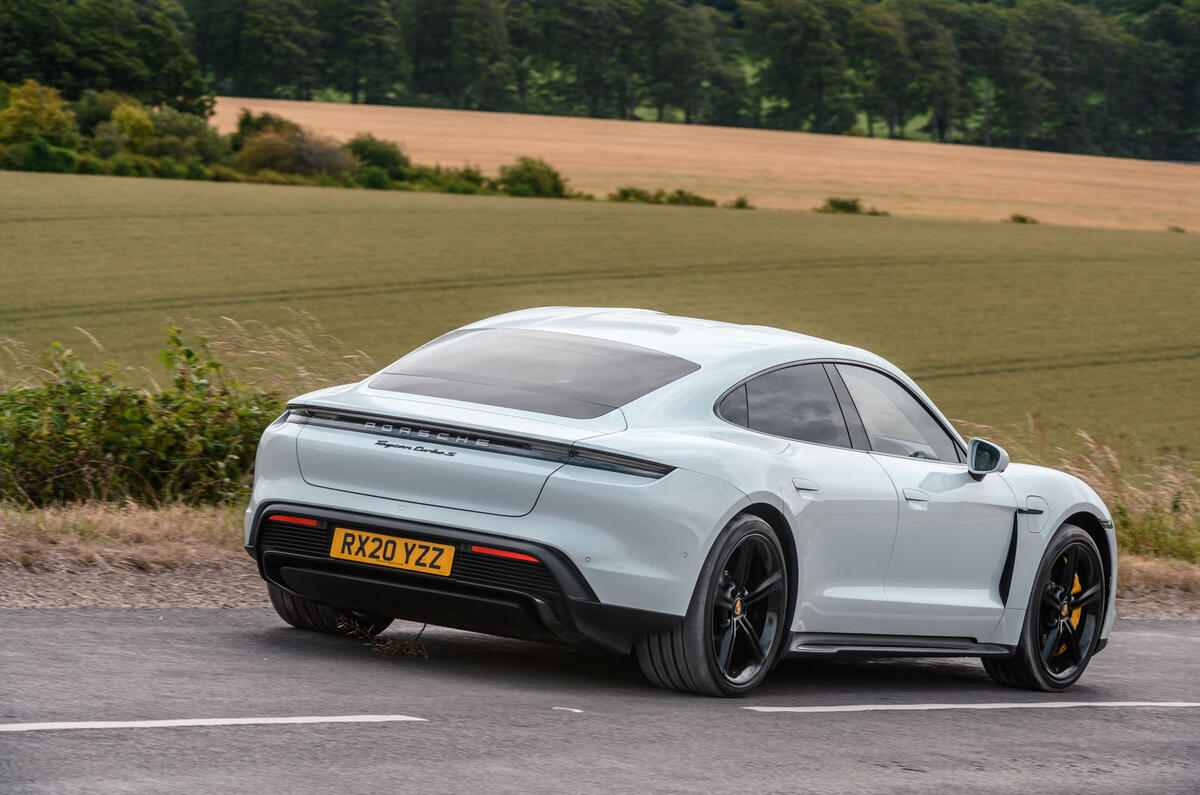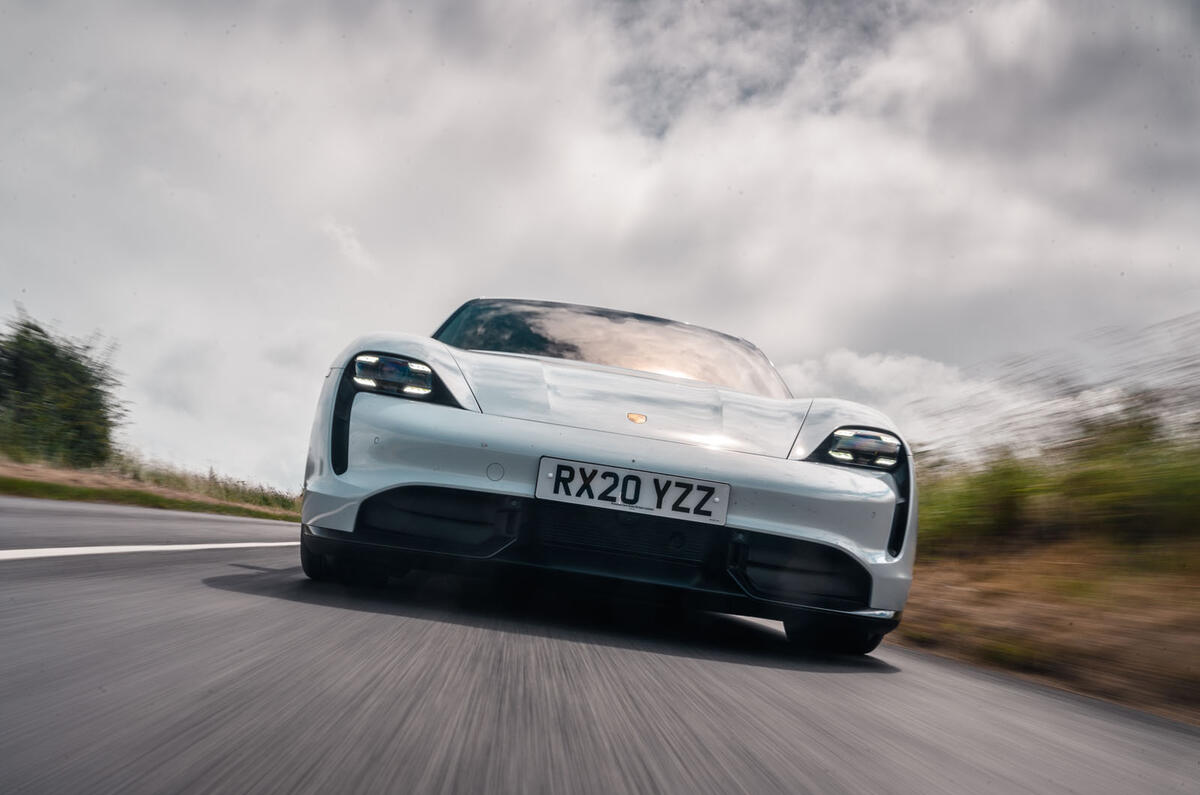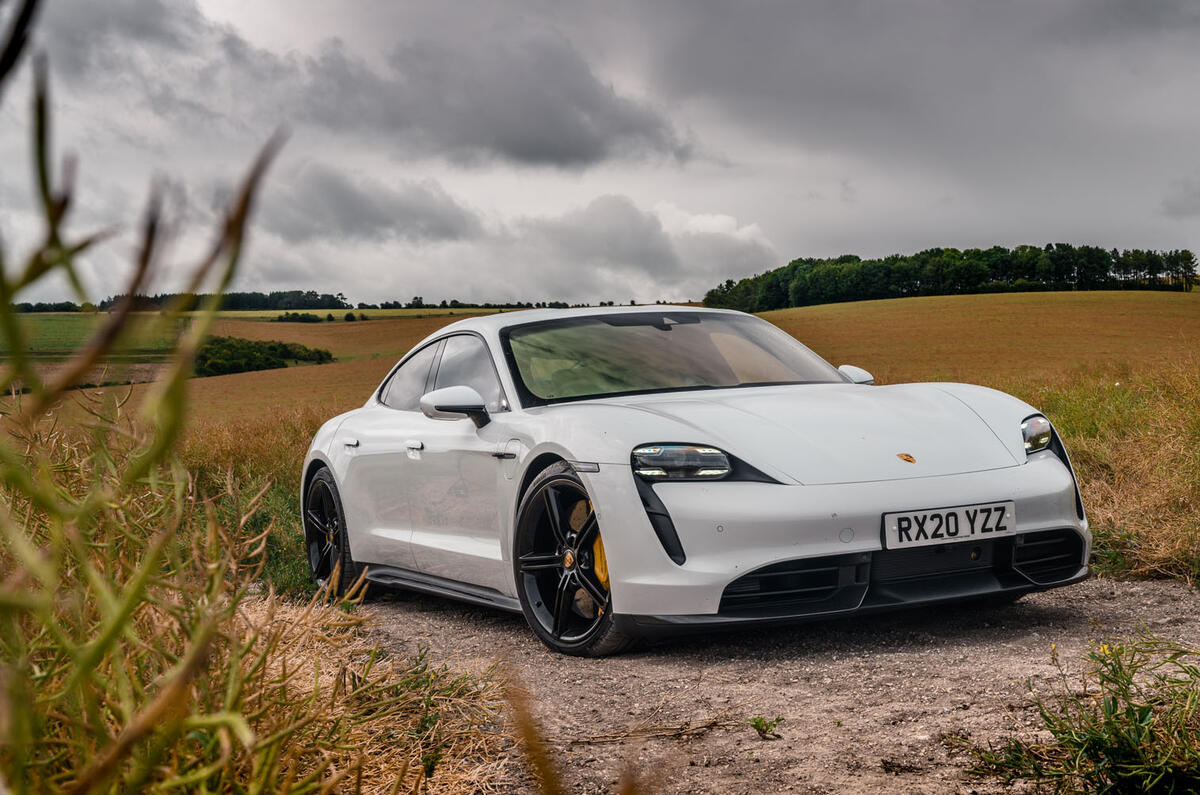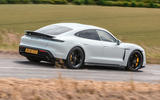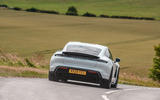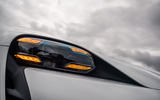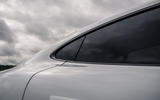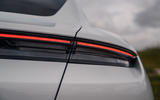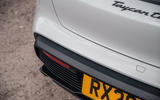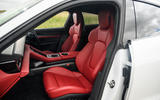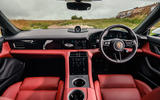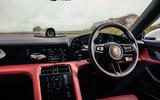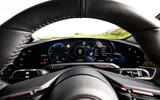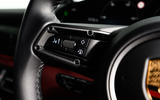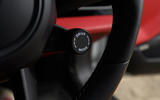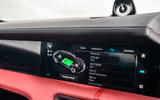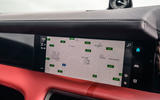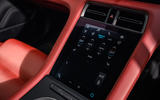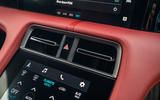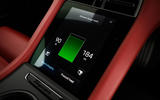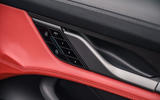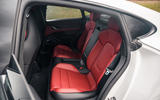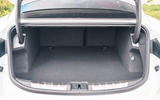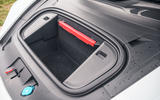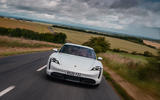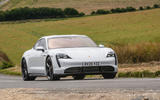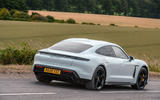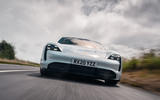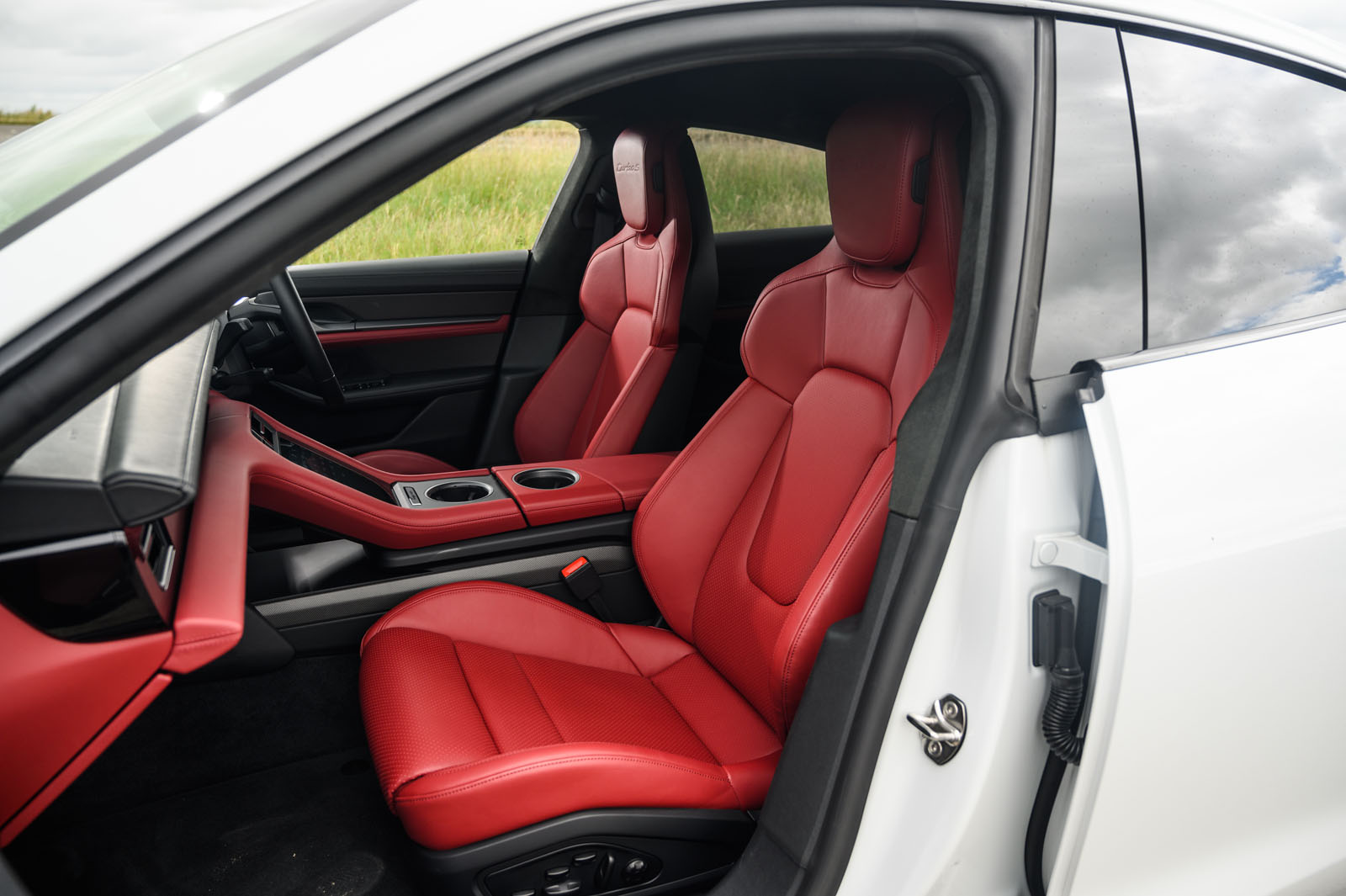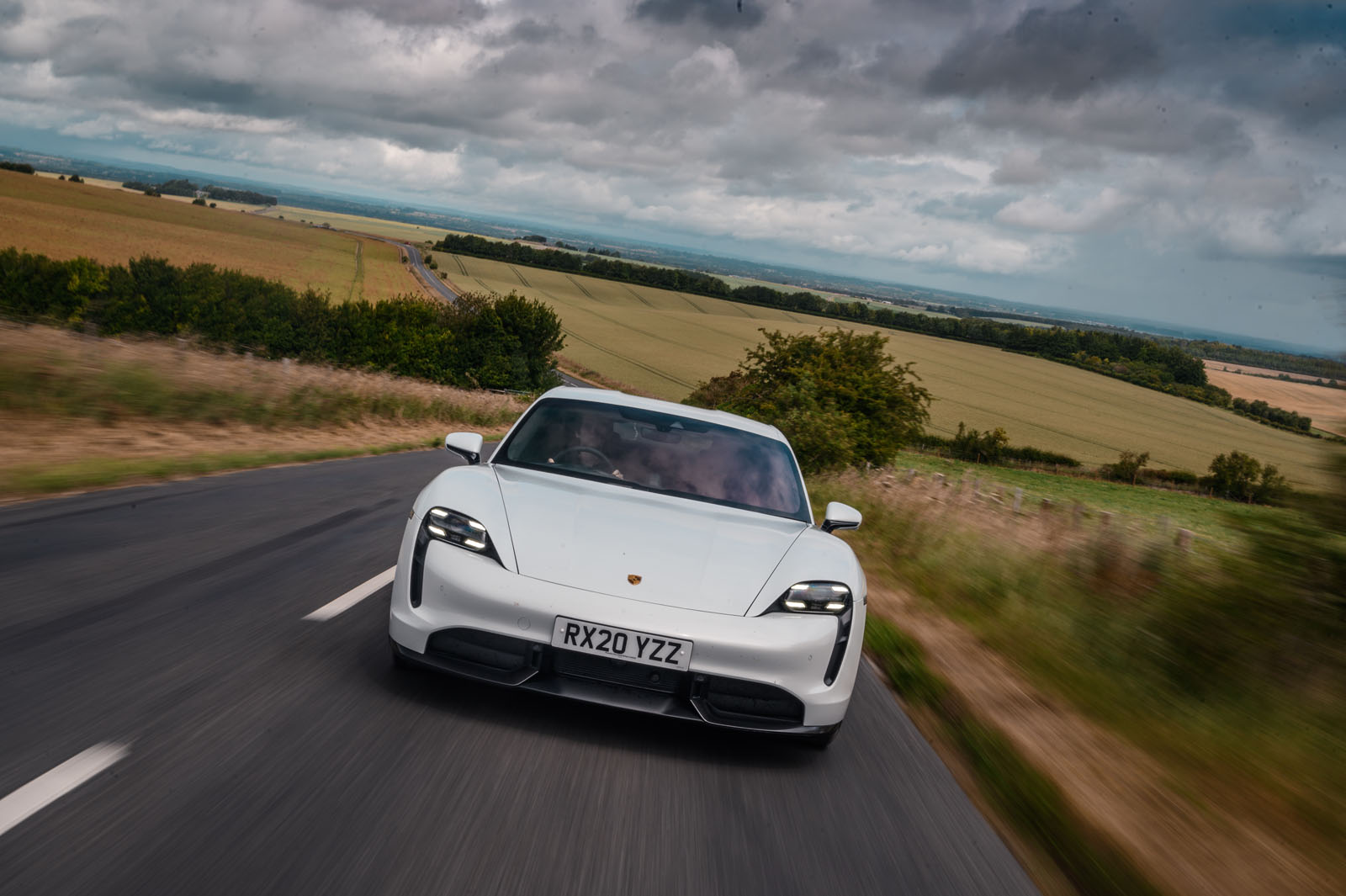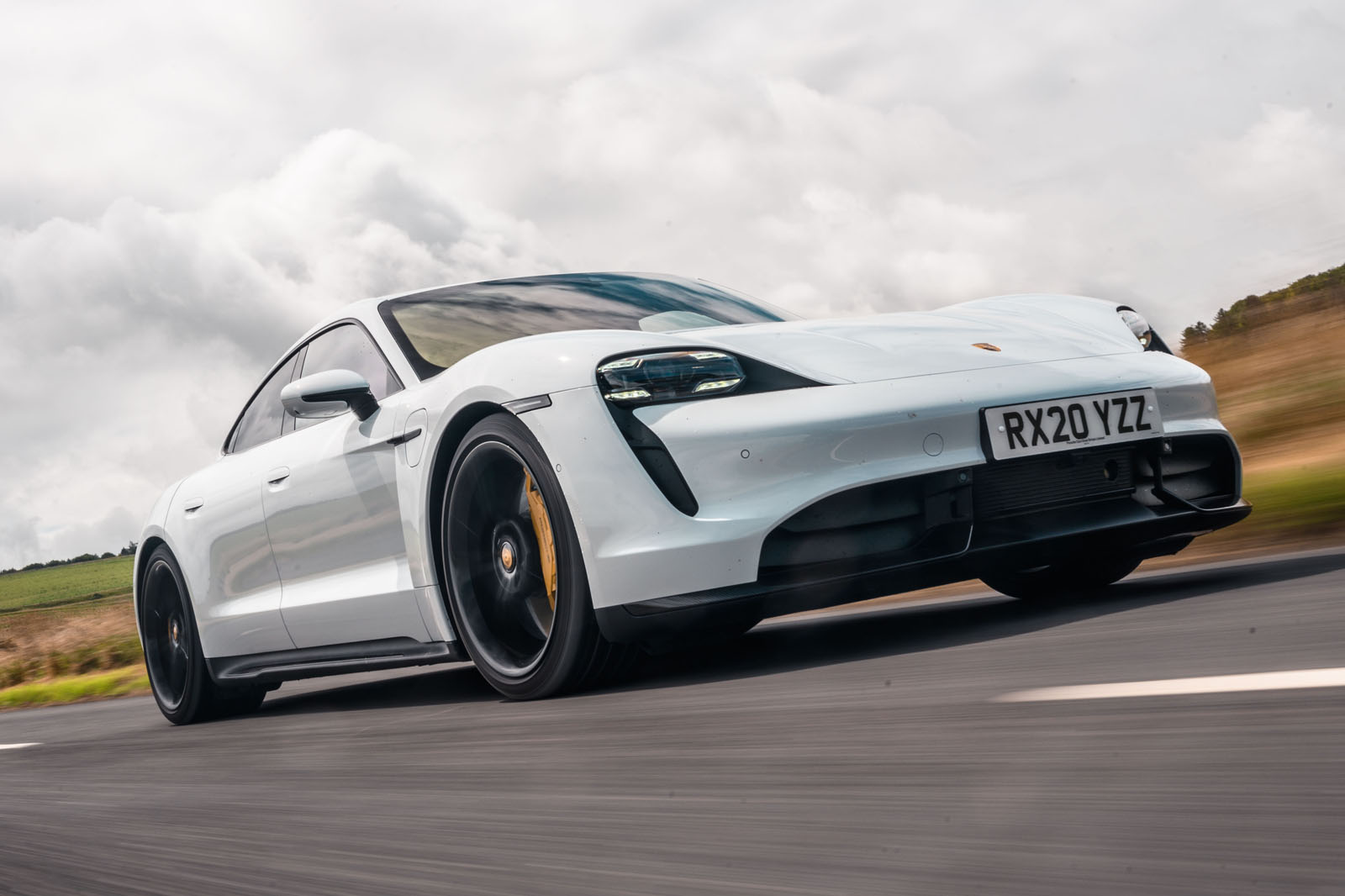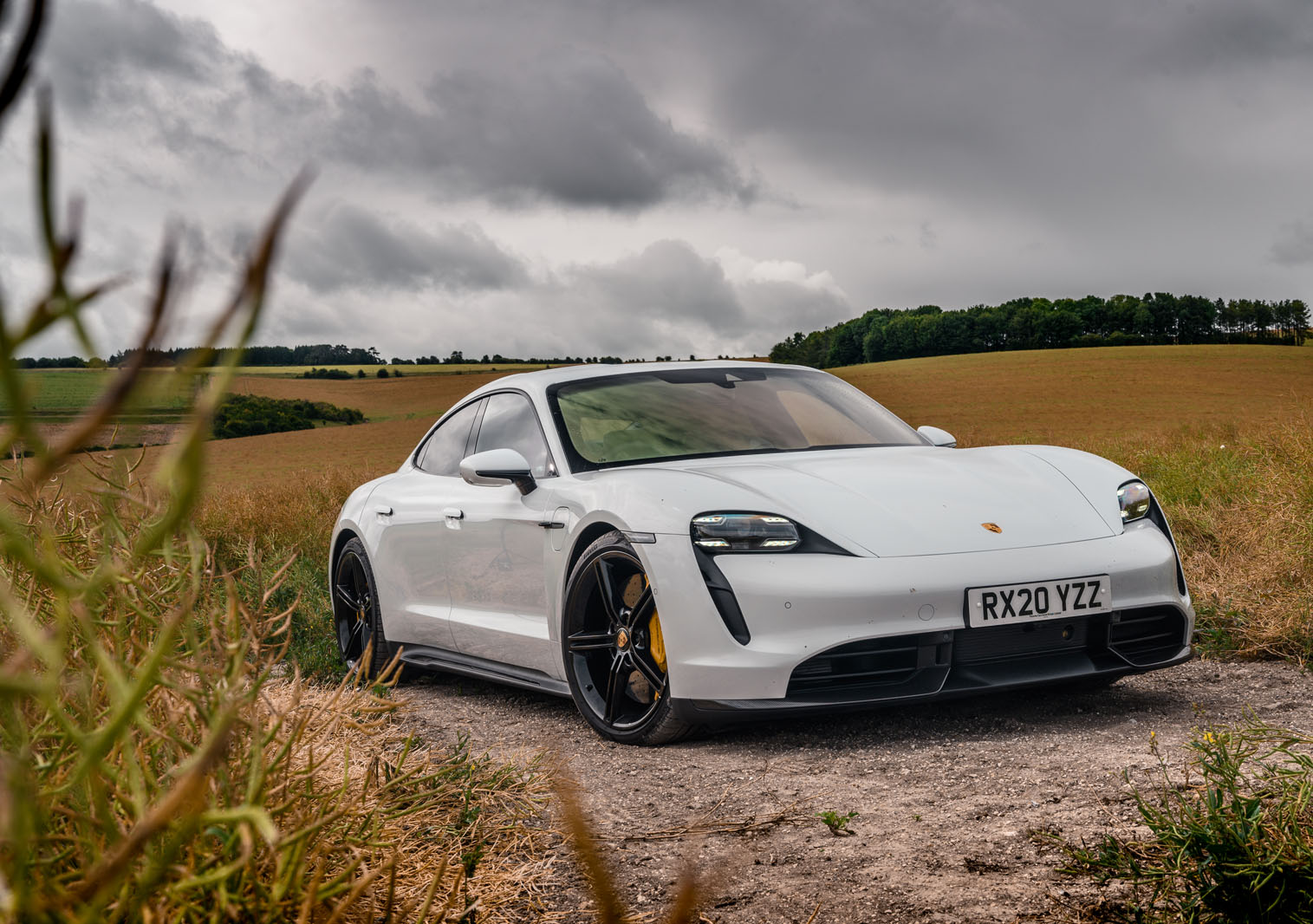Drop down into the figure-hugging, electrically adjustable sports seats, pull the door shut and you find yourself enveloped by a cabin that, purely in terms of its ergonomics, seemingly has plenty in common with that of a high-end Porsche 911 (just as it should) and offers a first-class driving position.
You sit low, flanked by high window ledges and a raised centre console angled upwards to meet the dashboard. A likeably thin-rimmed, small-diameter steering wheel sits directly in front of you and there’s enough adjustability in the column to bring it right in close to your chest.
Pedal placement is good, and although the brake sits quite a way off to the left, adapting to its positioning takes no time at all. Meanwhile, visibility out through the windscreen and over the low-slung nose is excellent – comparable with that of a McLaren supercar, in fact – although the view out the back is tight.
The Taycan’s heavy reliance on touchscreens and digital displays is likely as much a product of Porsche’s desire to paint it as a physical representation of the digital age as it is a move to address a historic tendency for the firm to use at least three buttons where one might have done. However, as graphically impressive as the screens are, the heightened need to remove your eyes from the road to locate the control you seek is arguably the largest chink in the Taycan’s otherwise excellent ergonomic armour.
Practicality is good but not outstanding – particularly in comparison with the likes of the Tesla Model S, although perhaps the comparison there is a little unfair.
Second-row passengers will find the amount of leg room on offer adequate, provided they’re not above average height, although head space is a bit tight. The 366-litre boot is of a good, usable size and shape and is complemented by a smaller, 81-litre compartment at the nose.
Porsche Taycan infotainment and sat-nav
Porsche says the Taycan represents its new digital approach to infotainment layout. It has a slim, reductionist ‘black panel’ instrument binnacle, a 10.9in landscape-oriented ‘main’ touchscreen and a smaller portrait-oriented one on the lower centre stack that mostly stands in for physical switchgear (much like similar screens on the latest Audis, Jaguars and Land Rovers). You can pay extra to put a fourth screen ahead of the front passenger, via which he or she can manage the on-board entertainment system, although our test car didn’t have it.
The system didn’t instantly seem as easy to navigate as the one in the latest 911, because it lacks the scrolling vertical panel of shortcut buttons so handily placed on the right edge of the main screen. You often have to navigate via the home screen to get from one menu to the other – a slightly clunky process.
The system’s display clarity and responsiveness are excellent, though. Wired device connectivity can be via either USB 2.0 or USB-C. The nav is easy to programme, but its POI network of public charging points wasn’t as complete as it could have been.


